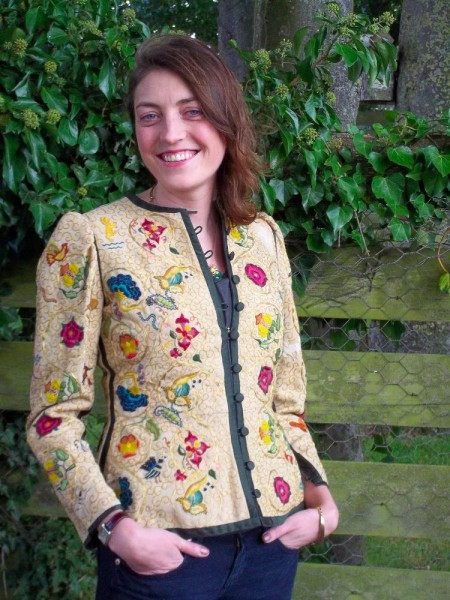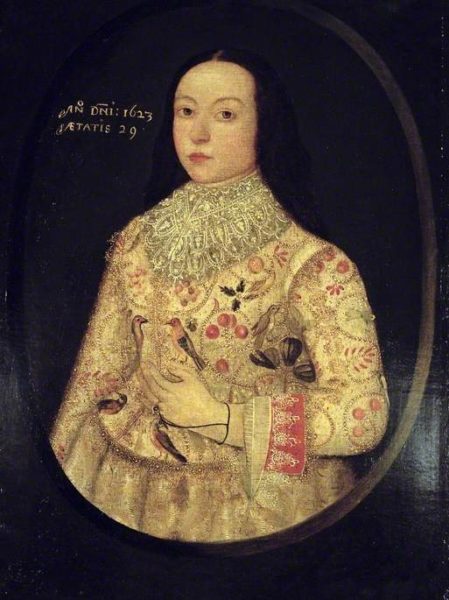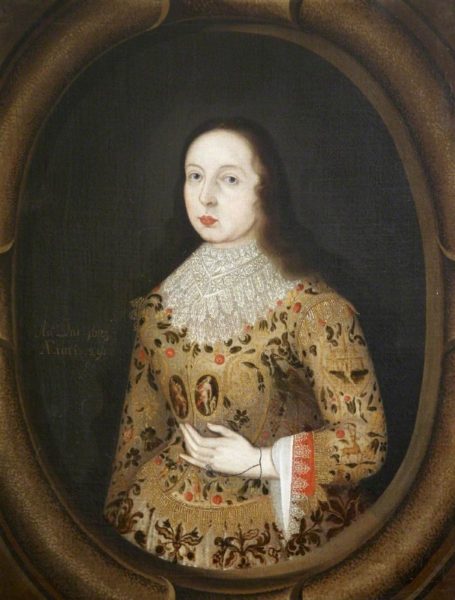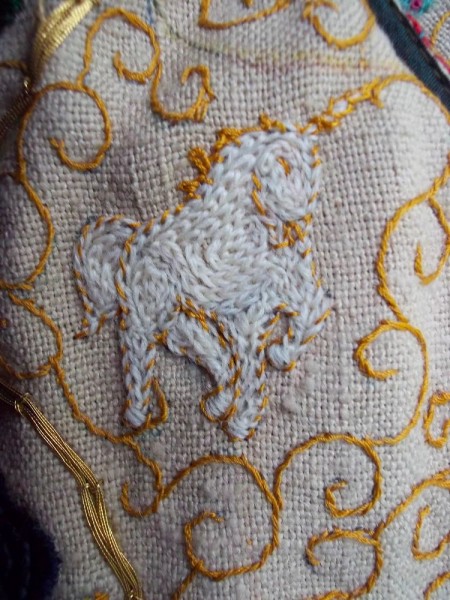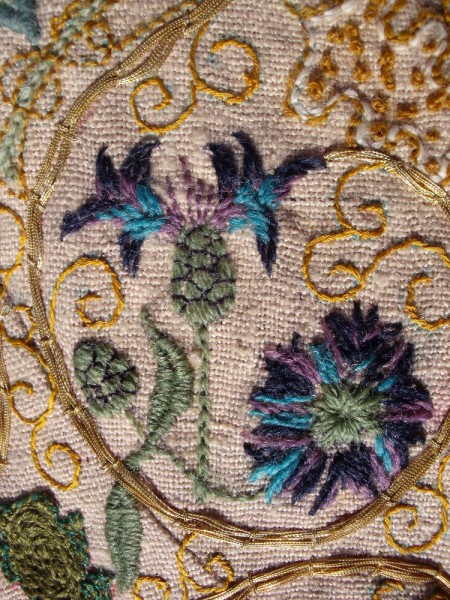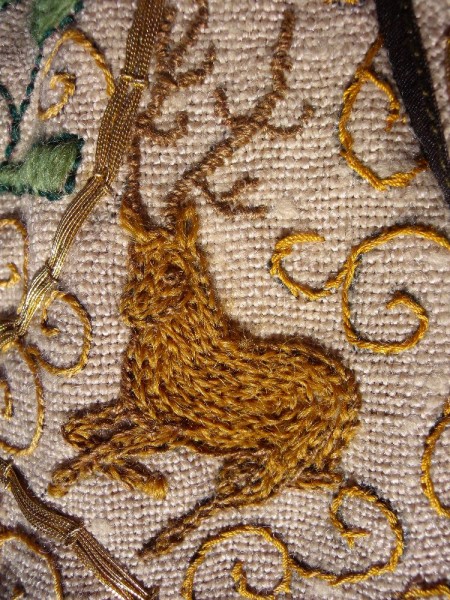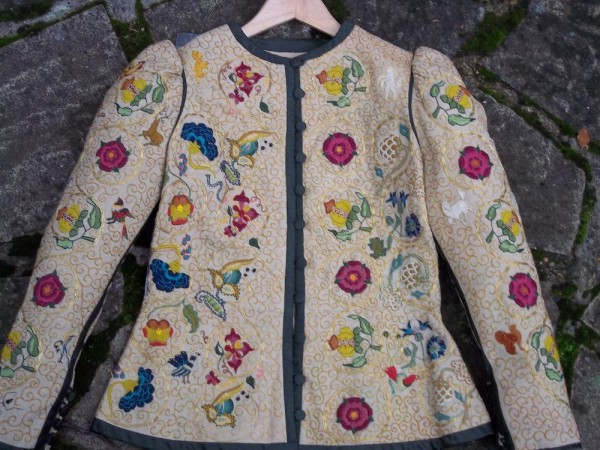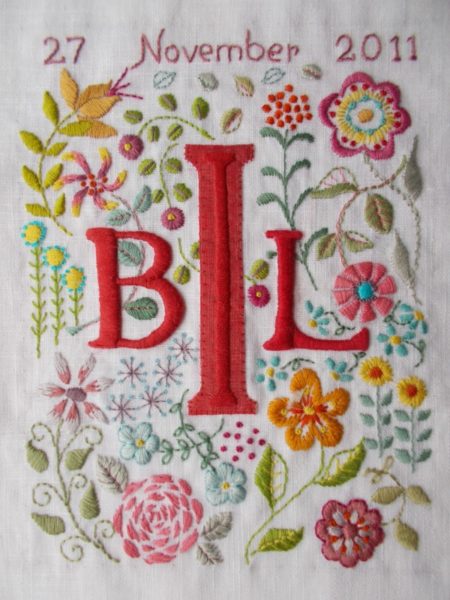
IBL monogram (hand embroidered by Mary Addison)
Sun (though not really with any warmth), flowering shrubs (quince in the hedge, pink camellias and pale pink viburnums visible in next door’s garden), slightly lighter evenings and a temporary tendency to hibernation have meant this week has been quite productive with the needles and I’m almost tempted to to believe I’m catching up with my backlog. As you might have noticed this monogram is for a girl born in 2011! Some backlog! Oh well, better late than never, etc. A bit of jolly floral embroidery is always a lovely thing to do and though I did a detailed sketch, I found I kept changing things as things progressed and as the mood took me. As well as this monogram, I’ve completed a couple of whitework initials, knitted all but the sleeves of a little cardigan and satisfied myself with a sample Fair Isle panel for another cardigan.
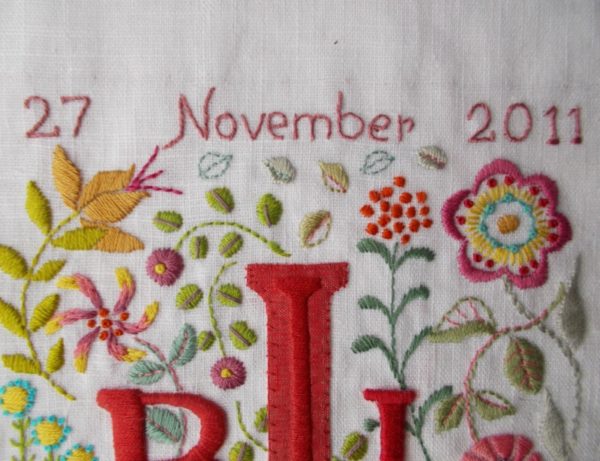
Detail of IBL monogram (hand embroidered by Mary Addison)
Next week is full and there will be little time for hands on sewing. Monday and Tuesday we are in London for another appointment at Moorfields Eye Hospital where my husband hopes his eye problem is sufficiently stable for them to give him Botox to treat a long standing squint and double vision. This has worked brilliantly in the past and we are hopeful it will again.
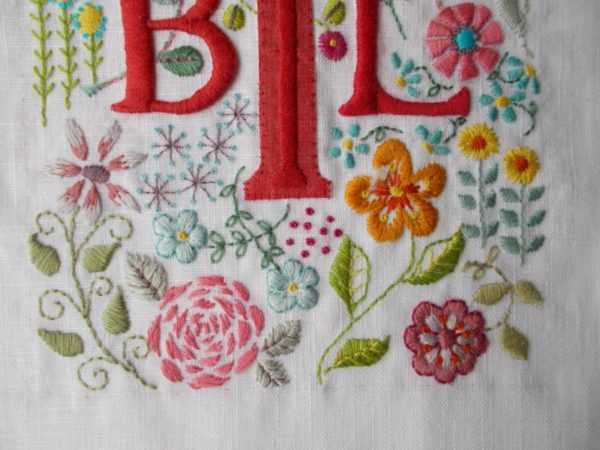
Detail of IBL monogram (hand embroidered by Mary Addison)
On Tuesday, while he sees people in The National Gallery to talk about his research, I shall go to The Cloth House and wallow in looking at all they have to offer without being in a rush to catch a bus or train. I now need more plain white linen of a nice weight and handle for monograms and embroidered cushions. Sadly, places selling such a simple, basic, quality fabric are getting few and far between. I love John Lewis but am grief stricken at the decline of their fabric departments – dressmaking but especially furnishing. For years I bought their wonderful Appleby fabric – 55% cotton 45% linen (or it might have been vice versa). I’d wash it at 95 degrees C so it would shrink no more and from it I made blinds for all the rooms in my 6 bedroom London house and a box pleated valance for a double bed. (People knocked on the door to find where I had my blinds from. I sold them for next to nothing with the house – should have saved them and used them elsewhere.) Appleby also came in numerous lovely colours, which were tough enough for floor cushions yet smart enough for the sofa too. Appleby next came with 13 % nylon, but still mainly cotton and linen, which was just about ok. Then it disappeared altogether. At this point I moved on to Heavy Casement – 100% cotton, quite rough with a slub but so reasonable at £8 a metre. I made blinds for my daughter’s house out of this. Now Heavy Casement too has disappeared but even worse, John Lewis seem to have no similar fabric that doesn’t have polyester. I do despair. The Cloth House is also great for hand blocked Indian cotton and I shall be tempted to buy some of this to cover scrap books and files for embroidery sketches. I may visit the big John Lewis but with a heavy heart. Hope the company’s new chair Sharon White has had time for some home sewing during her meteoric rise and can look at the relevant departments with a kindly eye.
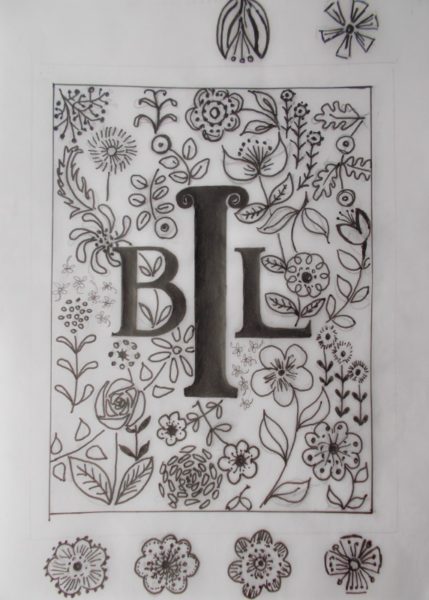
Sketch for IBL monogram (hand embroidered by Mary Addison)
Thursday and Friday we have this month’s U3A Art Appreciation which David does at The Wilson (Cheltenham At Gallery and Museum). I sent out numerous Christmas cards suggesting to old friends that they come over for one of these sessions and combine it with lunch – wouldn’t you know it, more than enough positive replies came back such that we’ve had to suggest March’s sessions too!

Alternative sketch for IBL monogram Suzani style.
I still have an unadorned fourth finger on my left hand – which feels very strange – but last week we met up with the maker of the original ring who has taken away my engagement ring so a new wedding ring will fit along side it. The old one had been blessed by a priest who later became Bishop of Monmouth but has since retired. I’m wondering whether we should seek him out to bless the new one – or am I letting what amounts to niggling superstition get the better of me?
Tomorrow our spring like weather is about to break and we are forecast the most severe storm since 2013, far too prettily name Storm Ciara, which is the third named storm of the season. We hope we can get to London.

